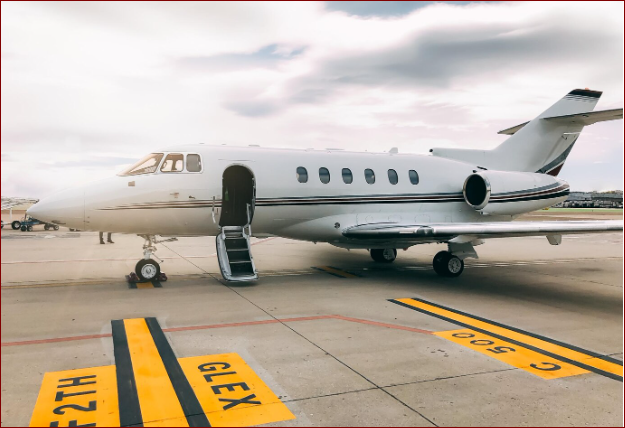A few years ago, owning a private aircraft felt like the kind of thing reserved for oil tycoons, movie stars, or global CEOs. But times have changed. In the past couple of years, the private aviation world has quietly exploded, drawing in all kinds of buyers, people who aren’t necessarily flashy but value their time, freedom, and mobility.
So, what’s driving this growing appetite for private jets, helicopters, and even smaller aircraft? A combination of global disruption, evolving business models, and a newfound emphasis on flexibility. Private aviation has moved from being a status symbol to becoming a practical tool.
The need for control is fueling the market
When the pandemic put commercial flights on hold, travelers with places to be started looking elsewhere. And for many, flying private wasn’t about luxury, it was about necessity. Commercial options dried up, borders closed, and airline routes disappeared. People with critical business or family matters couldn’t afford to wait.
That initial surge of interest didn’t go away. Once people experienced what it was like to skip crowded airports, long layovers, and unpredictable cancellations, going back to economy seating didn’t make much sense. Private aviation, in a lot of cases, became the new normal.
Buyers are not who you might think
The shift in buyer demographics has surprised even longtime aviation insiders. Today’s private aircraft owners include startup founders, physicians, media personalities, and professionals who are always on the go. These aren’t just people with deep pockets, they’re people who need a smarter, faster way to travel.
Digital platforms have made entry into the market easier than ever. Online tools like the Aviation marketplace, shoppers can compare aircraft specs, look up real-time availability, and explore options without even picking up the phone. There’s less mystery, more clarity, and far fewer gatekeepers.
The price of taking off
One of the most common questions around private aircraft ownership is cost, and the answer really depends on the type of aircraft and how far you’re planning to fly. Light jets, for example, are popular among newcomers. They’re nimble, efficient, and typically used for regional flights. These can range from $2 million on the low end to around $8 million for newer, well-equipped models.
For those needing to fly farther or with more passengers, heavy and long-range jets offer space, amenities, and nonstop travel across continents. These can easily run from $40 million to well over $70 million. Helicopters, often used for short hops or city-to-resort transfers, are relatively more affordable, with prices falling between $1 million and $9 million depending on make, model, and usage.
The process of buying has changed—A lot
Years ago, buying a jet meant finding a broker, setting up calls, dealing with layers of paperwork, and often flying out just to inspect the aircraft in person. It was slow, exclusive, and filled with red tape. Not anymore.
Today, aircraft sales feel a lot like real estate, clean listings, high-res images, transparent service logs, and often even pre-purchase inspection reports. For someone interested in browsing private jets for sale, the barrier to entry has never been lower. You can research, filter, and schedule a private showing with just a few clicks.
Why so many are exploring mid size jets
There’s a sweet spot in the market right now, and it’s mid-size jets. These aircraft are roomy enough to carry up to 10 passengers comfortably, but not so big that they become cost-prohibitive to operate. Most offer ranges long enough to cross a few countries without refueling and include creature comforts like workspaces, mini-galleys, and enclosed restrooms.
For buyers comparing their options, Mid Size Jets for Sale listings are often the first serious stop. They offer solid range, lower crew and fuel costs than their larger siblings, and are still fast enough to keep up with demanding schedules. Popular models in this bracket hover around the $6 million to $15 million range.
A global trend, not just a U.S. story
While the United States still dominates private aircraft ownership, international markets are catching up fast. In regions like the Middle East or Southeast Asia, private aviation is a necessity, not just a luxury. Business hubs are often far apart, commercial airlines are limited, and infrastructure gaps make private aircraft the most efficient solution.
Across Latin America and parts of Africa, the story is similar. Business owners, government officials, and even non-profit organizations are turning to aircraft as a way to navigate challenging geography. And with more pre-owned aircraft hitting the market, these solutions are no longer as out of reach as they used to be.
More than just a comfort upgrade
One thing buyers often cite is how a jet changes the pace of business. A team can hit three cities in one day, close a deal in the morning, and still be home by dinner. When compared to commercial options, that kind of agility can make a measurable impact on the bottom line.
There are also financial upsides. In some countries, business-owned aircraft may qualify for depreciation deductions, fuel tax breaks, or even leasing advantages. Factor in the opportunity cost of missed deals, and suddenly, ownership becomes more justifiable than ever.
The green future of aviation
Private jets have often been called out for their environmental footprint, and it’s a valid concern. But behind the scenes, there’s been a quiet push toward sustainability. Manufacturers are now exploring more aerodynamic designs, lighter materials, and fuel-efficient engines.
There’s also a growing move toward sustainable aviation fuel (SAF) and early prototypes of electric or hybrid aircraft for short-range travel. It’s not just a PR move—it’s part of a bigger transition that aims to keep private aviation in line with global climate goals.
Final thoughts
The private aviation world isn’t what it used to be. It’s not just about flying in style anymore, it’s about flying smarter. More people are recognizing that owning an aircraft can mean freedom, flexibility, and even financial advantage when used wisely.
Whether it’s a solo entrepreneur looking to skip layovers, or a growing company expanding across continents, private aircraft are becoming less of a dream and more of a decision. And in today’s fast-moving world, it’s a decision more people are choosing to make, one flight at a time.
DISCLAIMER – “Views Expressed Disclaimer: The information provided in this content is for general informational purposes only and does not constitute financial, investment, legal, tax or health advice. Any opinions expressed are those of the author and do not necessarily reflect official position of any other author, agency, organization, employer or company, including NEO CYMED PUBLISHING LIMITED, which is the publishing company performing under the name Cyprus-Mail…more
You should not rely on the information as a substitute for professional advice tailored to your specific situation.







Click here to change your cookie preferences